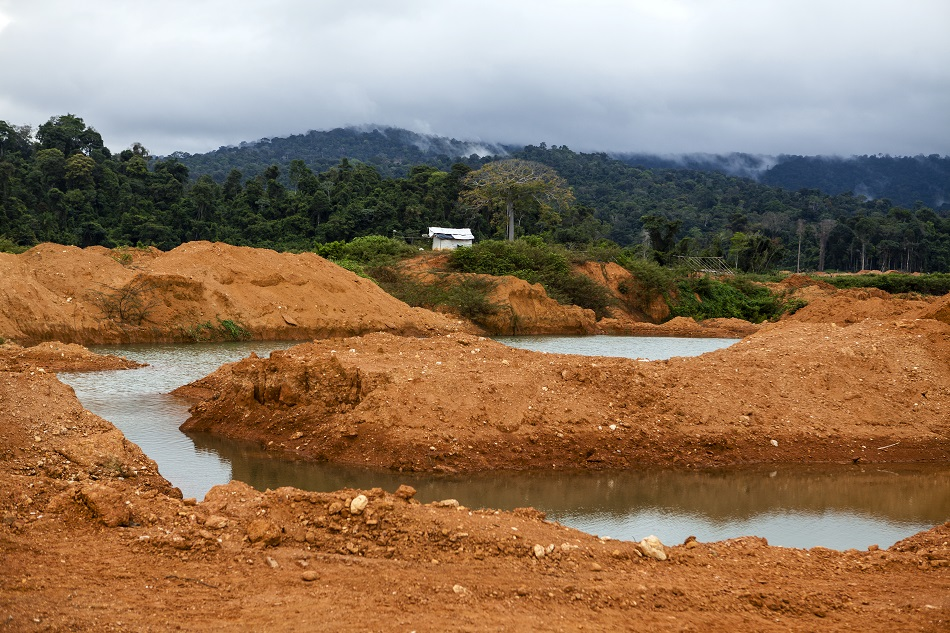
Image Credit: Jan Willem van Hofwegen/Shutterstock.com
Suriname is located in northern South America and borders the North Atlantic Ocean, between Guyana and French Guiana. It covers an area of 163,820 km2 and its total population is 597,927 according to 2018 estimates. The country experiences temperate and moderate climatic conditions.
Suriname is rich in natural resources that include bauxite, gold, kaolin and small amounts of iron ore, platinum, copper, and nickel. The economy of the country largely depends on its mining industry. The country’s economic growth rate reduced to 2.2% in 2009 from 7% in 2008, owing to the fall in commodity prices in global markets.
In 2011, the government of Suriname increased taxes and devalued currency, which resulted in an increase in GDP to $5.125 billion. This rose to $8.68 billion in 2017, with a GDP growth of 1.9%. The economy is highly sensitive to mineral price volatility due to its over-reliance on the industry.
Overview of Resources
The mineral activities of Suriname include quarrying of gravel, sand, clay, and stone, and production of iron ore, gold, petroleum, and cement.
Until recently, Suriname was a leading producer of alumina and bauxite globally. According to 2017 data, the country’s total export value was estimated to be $2.69 billion, and gold and petroleum contribute to nearly 67% of the country’s total exports.
Metals
Suriname is rich in resources such as bauxite, alumina, and gold. Recently, alumina production was ceased in Suriname, causing loss of jobs and revenue. A major US aluminum company discontinued its mining operations in 2015 after 99 years.
Gold mining and export is of particular importance to the Surinamese economy. The Rosebel mine is a major gold mine owned by Canadian company IAMGOLD Corp. in conjunction with the Suriname government The current attributable guidance according to 2019 reports is between 765,000 and 810,000 oz. The mine has recently been the target for illegal miners.
The Merian gold mine, which the government of Suriname holds a 25% share in, yielded 131,000 oz in 2018.
Mineral Fuels
Oil continues to be an important part of Suriname’s economy. According to a 2019 press release, the government-owned Staatsolie Maatschappij Suriname N.V., announced a US$149 million profit in 2018, which rose compared to 2017 figures. The consolidated gross turnover was US$506 million. Daily oil production in 2018 was 16,383 barrels. 135 wells were added in 2018, and production aims for the coming years are 6 million barrels annually.
Investment
Illegal mining is a major challenge faced by the country and the government has expressed concern over this practice which drastically affects the environment and economy. In an effort to curb this, the government of Suriname, in recent years, imposed a tax on the foreign and native gold miners who have put up a profitable gold mining business, though small-scale gold miners are exempted until they start trading their gold.
The recent cessation of alumina and bauxite mining in the country has proved problematic for Suriname’s mining industry, leading to a heavier reliance on other sectors of the industry in this resource-rich South American nation.
Rosebel’s gold production is expected to increase in the coming years' thanks to mine exploration programs, resource delineation investments and construction of leach tanks in order to improve recoveries as well as efforts to curb illegal mining. Experts feel that the country’s future economic prospects will largely depend on the introduction of monetary and fiscal policies and structural reforms to improve its mineral market.
Sources and Further Reading
This article was updated on 27th February, 2020.
Disclaimer: The views expressed here are those of the author expressed in their private capacity and do not necessarily represent the views of AZoM.com Limited T/A AZoNetwork the owner and operator of this website. This disclaimer forms part of the Terms and conditions of use of this website.